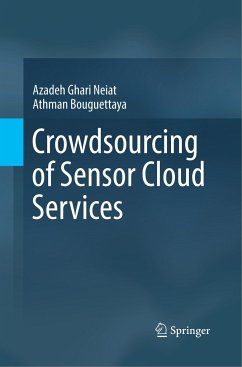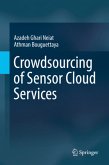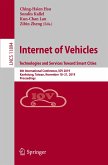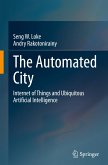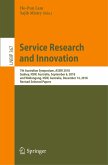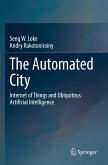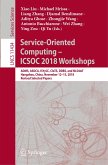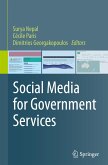This book develops a crowdsourced sensor-cloud service composition framework taking into account spatio-temporal aspects. This book also unfolds new horizons to service-oriented computing towards the direction of crowdsourced sensor data based applications, in the broader context of Internet of Things (IoT). It is a massive challenge for the IoT research field how to effectively and efficiently capture, manage and deliver sensed data as user-desired services. The outcome of this research will contribute to solving this very important question, by designing a novel service framework and a set of unique service selection and composition frameworks.
Delivering a novel service framework to manage crowdsourced sensor data provides high-level abstraction (i.e., sensor-cloud service) to model crowdsourced sensor data from functional and non-functional perspectives, seamlessly turning the raw data into "ready to go" services. A creative indexing model is developed to capture and manage the spatio-temporal dynamism of crowdsourced service providers.
Delivering novel frameworks to compose crowdsourced sensor-cloud services is vital. These frameworks focuses on spatio-temporal composition of crowdsourced sensor-cloud services, which is a new territory for existing service oriented computing research. A creative failure-proof model is also designed to prevent composition failure caused by fluctuating QoS.
Delivering an incentive model to drive the coverage of crowdsourced service providers is also vital. A new spatio-temporal incentive model targets changing coverage of the crowdsourced providers to achieve demanded coverage of crowdsourced sensor-cloud services within a region.
The outcome of this research is expected to potentially create a sensor services crowdsourcing market and new commercial opportunities focusing on crowdsourced data based applications. The crowdsourced community based approach adds significant value to journey planning and map services thus creating a competitive edge for a technologically-minded companies incentivizing new start-ups, thus enabling higher market innovation.
This book primarily targets researchers and practitioners, who conduct research work in service oriented computing, Internet of Things (IoT), smart city and spatio-temporal travel planning, as well as advanced-level students studying this field. Small and Medium Entrepreneurs, who invest in crowdsourced IoT services and journey planning infrastructures, will also want to purchase this book.
Delivering a novel service framework to manage crowdsourced sensor data provides high-level abstraction (i.e., sensor-cloud service) to model crowdsourced sensor data from functional and non-functional perspectives, seamlessly turning the raw data into "ready to go" services. A creative indexing model is developed to capture and manage the spatio-temporal dynamism of crowdsourced service providers.
Delivering novel frameworks to compose crowdsourced sensor-cloud services is vital. These frameworks focuses on spatio-temporal composition of crowdsourced sensor-cloud services, which is a new territory for existing service oriented computing research. A creative failure-proof model is also designed to prevent composition failure caused by fluctuating QoS.
Delivering an incentive model to drive the coverage of crowdsourced service providers is also vital. A new spatio-temporal incentive model targets changing coverage of the crowdsourced providers to achieve demanded coverage of crowdsourced sensor-cloud services within a region.
The outcome of this research is expected to potentially create a sensor services crowdsourcing market and new commercial opportunities focusing on crowdsourced data based applications. The crowdsourced community based approach adds significant value to journey planning and map services thus creating a competitive edge for a technologically-minded companies incentivizing new start-ups, thus enabling higher market innovation.
This book primarily targets researchers and practitioners, who conduct research work in service oriented computing, Internet of Things (IoT), smart city and spatio-temporal travel planning, as well as advanced-level students studying this field. Small and Medium Entrepreneurs, who invest in crowdsourced IoT services and journey planning infrastructures, will also want to purchase this book.
"The book is suitable for scientists and programmers, both for research and for developing practical applications. ... the proposed approaches, models, and algorithms could be useful for managing similar space-intensive and/or time-intensive crowdsourced cloud services." (Snezhana Gocheva-Ilieva, Computing Reviews, February, 2019)

